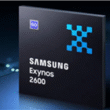The Challenges of Achieving 165Hz Displays: Insights from OnePlus
Summary:
- OnePlus is aiming for advanced 165Hz refresh rates, navigating significant technical challenges that have kept the industry at 120Hz.
- Key obstacles include pixel charging speed, chip computing power, and synchronization issues, among others.
- Innovative solutions are being developed to enhance screen performance and longevity, setting a new standard in mobile display technology.
In a recent discussion, Li Jie, President of OnePlus China, highlighted the advantages of 165Hz refresh rates, a feature that has garnered attention for its potential to enhance user experience. Despite this, the industry has largely remained stagnant at 120Hz for the past five years. What are the underlying reasons for this plateau, and what steps are being taken to overcome these hurdles?
Identifying the Core Technical Challenges
The primary factors hampering progress towards 165Hz displays can be encapsulated in five critical technical challenges that the screen manufacturing industry faces:
-
Insufficient Pixel Charging Speed: The time it takes to charge a single row of pixels is a major bottleneck that limits refresh rates.
-
Chip Computing Power: Current display chips struggle to handle the demands of higher refresh rates effectively.
-
Touch Display Feedback: Ensuring touch responses sync accurately with display updates remains a complex issue.
-
Fast Screen Switching: The speed of transitions can cause visual instability, impacting overall display quality.
- Screen Lifespan: Increased pixel switching frequency raises concerns about long-term durability, affecting the lifespan of the screens.
Every one of these challenges represents a significant technical hurdle within the display sector. In a bid to rectify these issues, OnePlus is actively developing cutting-edge solutions.
Innovative Approaches to Screen Technology
To tackle these challenges, OnePlus is undertaking several initiatives:
-
Customized Luminescent Materials: By creating specifically designed X3 materials, OnePlus aims to enhance screen life while reducing power consumption and improving color accuracy.
-
Redesigned Circuitry: A complete overhaul of the display circuit architecture, along with proprietary driving algorithms, has enabled a drastic reduction in pixel charging time to an impressive 1.3 microseconds, almost doubling the industry standard.
-
Enhanced Chip Design: The company has significantly upgraded its display chip, increasing the number of transistors by 1.3 times. This upgrade allows for stable performance at full-frame 165Hz rates.
- State-of-the-Art Production Line: OnePlus has established a unique self-developed production facility to ensure each screen’s accurate display and pixel integrity.
Li Jie underscored the importance of these technological innovations, noting that they collectively represent a new milestone in mobile screen technology. He emphasized that achieving these advancements is no easy feat, demanding an exceptional level of engineering prowess.
Strategic Choices in Display Resolution
In his remarks, Li Jie also touched on the decision to prioritize 1.5K resolution combined with 165Hz over a more conventional 2K option. He described this approach as inherently riskier but essential for delivering an unparalleled gaming experience. The positive feedback from users and media professionals who have sampled the 165Hz experience has further validated OnePlus’s strategic direction.
As OnePlus aspires to become a frontrunner in delivering superior gaming experiences, it recognizes the necessity for innovation and breakthroughs. The feedback received to date reaffirms the decision to invest in 165Hz technology, which they believe is perfectly aligned with current industry trends.
Industry Implications and Future Prospects
Li Jie’s observations reveal a growing consensus among manufacturers regarding the significance of 165Hz displays. The willingness of competitors to initiate projects aimed at similar advancements serves as a testament to the potential shifts within the industry landscape.
As technology continues to evolve, the focus on enhancing refresh rates and display performance is likely to shape the future of mobile screens. By addressing existing technical challenges and pioneering new solutions, companies like OnePlus may well define the next generation of mobile gaming and user experiences.
In conclusion, while formidable obstacles remain, the commitment shown by OnePlus and its advancements in display technology are set to pave the way for a new era in mobile screens. As consumers increasingly demand better visual performance, the push towards 165Hz displays signifies a significant milestone in the quest for enhanced digital interactions.





